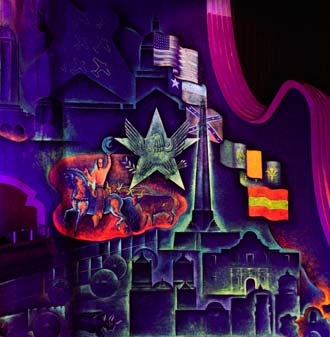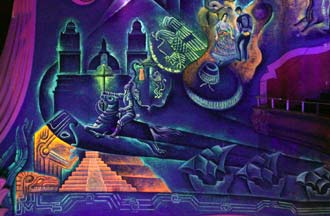Museum Conservation Institute (MCI) conservators are assisting in the preservation of 1959 "blacklight" murals in the Alameda Theatre in San Antonio, Texas. These paintings, which depict scenes of San Antonio's Mexican heritage, are examples of a dramatic trend in interior theater decoration in the 1940s and early 1950s. They were created with fluorescent paints, resulting in a spectacular glowing three-dimensional appearance under ultra-violet illumination. (The term fluorescent should be differentiated from phosphorescent, liminescent, or glow-in-the-dark, because the murals do not continue to fluoresce in the absence of an ultraviolet light source.)
After a financially unsuccessful conversion to a triple-plex movie theatre in the 1960s, the Alameda Theatre spent decades in disrepair. Museo Americano, a Smithsonian affiliate museum and performing arts center allied with Washington's Kennedy Center, is committed to a careful and educated approach to the complete restoration of the Alameda's historic structure. The conservation program's development involves a collaboration of an historic theater preservation architect, painting conservators, and scientists from MCI.

